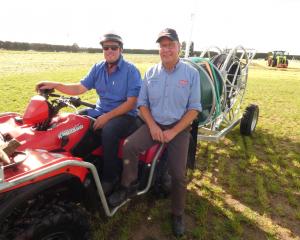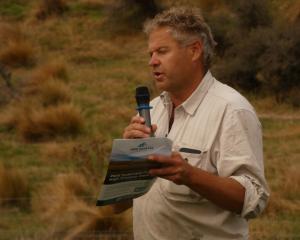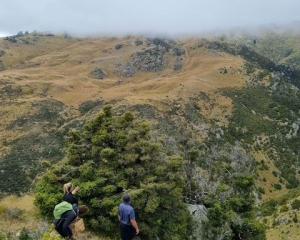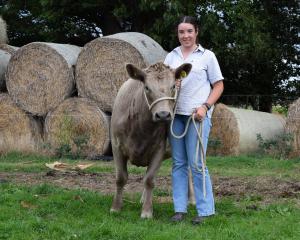
Mid Canterbury’s John and Jane Harrison are on the same page when it comes to bringing cashmere goats into their Temora Downs mixed farm to control thistles and improve their pasture quality.
They run a 650ha busy sheep, beef, deer and cropping property near Mayfield and over the past year added a good-sized herd of cashmere does to the mix.
The catalyst for going the goat way was being introduced to NZ Cashmere, which is looking to rebuild the cashmere industry.
Mrs Harrison said they had had toyed with the idea of adding cashmere goats to their dryland farm a year earlier.
"I did say we should get some goats after driving around one day, but we didn’t go any further with it at the time and it wasn’t until we saw the project with NZ Cashmere and Ag First where they were looking for sheep and beef farmers to run a two-year project that we put our name in for this."
Mr Harrison has been impressed with their thistle appetite.
"We hummed and hahhed for a while, and the Callies (Californian thistles) and Nodders (nodding thistles) were just rife so we went and tried out these goats and it’s amazing what they’ve done. In two days they’ve just chewed out four hectares of thistles. One time I went to go check on them and the thistles were thick on the ground and I came back in a few days’ time and they were all gone and the goats had their heads in the fence trying to get to the long grass in the tree yards."

A focus earlier on re-grassing, mainly using a ryegrass base with plantain, red and white clover, and sometimes, chicory, had helped them finish all their own stock, and improve the ewes’ lambing percentages.
However, with the high fertility pastures and heavy yearly rainfall came more thistles.
In a couple of their paddocks which were reworked and regrassed about four years, ago they were so dense they could barely walk through them, he said.
"This paddock right there was just red with flowers of Nodders. The goats were in the paddock next door and I didn’t think they would get on top of this at all. So I topped half of it and then just chucked them in to see what would happen. This is five days later and look at it."Only the remnants of thistle stalks remain on the leased part of the farm with the pasture responding to the lack of competition.
Californian thistles are a different ball game to their nodding cousins as they have a solid underground root system.
When the first crop of thistles are either topped, weed-wiped or the goats are put on them, they often reappear twice as thick.
Looks are deceiving though as that’s when the farmer knows he has them on the run as the underground root system starts to become exhausted.

The white-coated 150 mixed-age cashmere does, between 3 and 7 years old, will live in the 30ha block until they are mated and likely go out for the winter in a rough area beside the main lane.
Their ability to graze on weeds unpalatable to other stock means they can go on old tree stump blocks, and the like, as long as there is some shelter to keep them out of the wind.
In the two-month lead-up to shearing, the farmer will only need to make sure their coats are clear of thistles and other material so their cashmere fibre is clean.
Good seven-wire fencing or a hot wire running around the perimeter is a must as their inquisitive nature means they need to be well contained.
However, Mr Harrison has been surprised to learn how easy they are to handle.
"There might be a mob of four or five of them who get out and they see or hear you coming and they run back to where they got out so then you know where the hole is and go and fix the hole. The odd time they run back somewhere else and can’t get back so I just open a gate. Generally, if they get out they all get out when one finds a hole and the others follow. I had one paddock which didn’t have any thistles and at the next one the gate was open and it had thistles. Anyway, they got through a gap in the seven-wire fence and skipped the paddock with no thistles straight to the paddock with thistles."
In other paddocks at the top of the hill where the does had raised their kids, they too were full of Californian and Nodding thistles, but the weaned kids are keeping them down.

The Harrisons are working with Rural Solutions farm consultant Graham Butcher to see how they can fine-tune the running of the does in their farm system with a focus on spray-free thistle management and improving their pastures over the next two seasons.
Mr Butcher is overseeing the two-year pilot at Temora Downs on behalf of NZ Cashmere and following the economics of the flock.
He said the many benefits of goats included reducing the high costs of controlling thistles and the savings from improving pastures.
“This is already a highly productive commercial farm which makes it a useful case to show how cashmere production can further support diversification, and farm profitability. The focus is on feed management on the farm. It revolves around economic returns and how you look at them. Understanding profitability of stock policy and matching that to the feed conditions on the farm is important."
He said the browsing of scrub, thistles cutty grass, gorse and broom by goats was a useful addition for sheep and beef farmers as half of the feed they consumed was considered zero to low stock feed.
"They also take cost out of the farm system by reducing your sprays.”
The couple opened their woolshed doors to interested visitors at a field-day by NZ Cashmere under Andy May who is chief executive of Woolyarns, a 78-year-old business in Wellington supplying premium knitting yarns internationally.

The plan to build cashmere numbers on a solid platform after the boom and bust of the 1980s was hatched when Mr May was contacted by veteran South Otago breeder David Shaw.
Mr Shaw said farming typically wasted between 10% to 25% of feed and it was more difficult to manage weeds in hill country operations.
Goats usually ate from chest height and started from the top to work down. They left the best grass and clover alone, whereas sheep started at the bottom and grazed up, he said.
"By and large on our farm we do not have weeds any more and while there are a couple of things that are a headache the goats consume them, to turn them into product. We give them space to roam and by doing that they will pick out what they want which is typically not the best cream stuff that is going to your sheep and cattle. So there’s an old adage that says you can put about 10% liveweight in goats on a farm and not really impact existing stock units because they are consuming different parts of the pasture."
Cashmere prices are up to $150 a kilogram for a grade between 14.5 and 15.9 microns with 16 to 16.7 microns selling for $125/kg and 16.8 to 18 microns $110/kg.
While this is appealing, the multi-purpose nature of the animal and the way it dovetails in their operation as a tool to support pasture improvement for their beef finishing is what grabbed the Harrisons.
Temora Downs rises from 400 metres to 600m above sea level and catches 1200mm of rain a year.
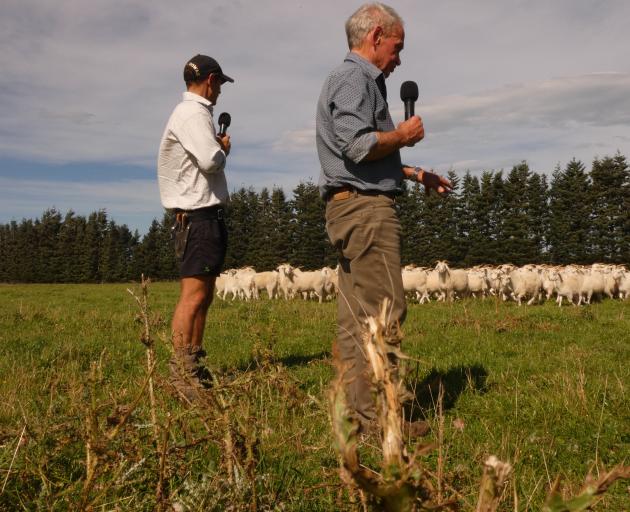
The Harrisons run 2500 ewes, 110 beef cows, 170 stags and trading stock including buying store lambs as well as growing 20ha of barley and 30ha of winter feed for dairy cows.
Another 150 cattle are on contract to be grown to 280kg by Anzco under conditions by its client Aleph Inc, a large family-owned Japanese company.
Mr Harrison said one of the main reasons they took on cashmere goats was they would help them meet some of these conditions.
"Our beef all goes to Aleph in a contract with Anzco and with that contract we are not allowed to use certain sprays so that knocks out quite a few of our thistle sprays and takes a long time to catch up on our weed work."
While it looks like some of these sprays may soon be able to be used, the Harrisons would prefer to avoid them as they also take out valuable clover in their pastures.
That just confirms to them the many benefits the goats are providing.
Their appetite for thistle munching has turned a cost into a saving, helped reduce spraying and the fibre returns will add to their cash flow as well as integrate nicely with the rest of their stock policy.
"We’ve got a good perimeter fence and they’re not really getting out ... As long as you’ve got thistles for something to eat they’re pretty cruisy."




